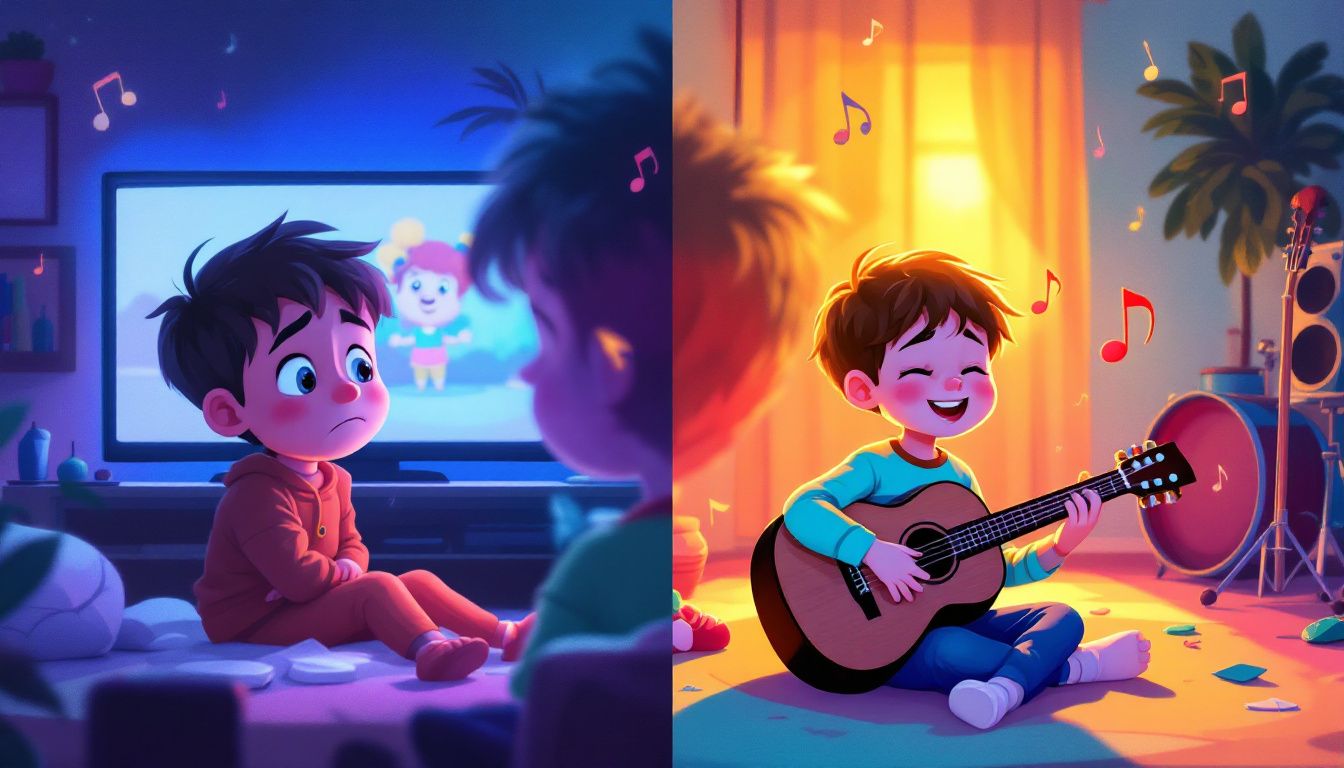
Screen Time vs. Music Time: Making the Right Choice for Your Child's Brain
Every parent knows the familiar glow of screens in their home. From tablets to smartphones, our children are growing up in a digital world. But what if there was a more enriching way to engage their minds? Let's explore how active music-making can be an exciting alternative to passive screen time.
Understanding the Screen Time Challenge
As parents, we've all been there – screens can feel like both a blessing and a curse. They keep our kids entertained, but we worry about the effects of too much screen time. It's not about guilt; it's about finding better options for our children's developing minds.
The Magic of Active vs. Passive Learning
When children engage with screens, they're often in a passive state of receiving information. But when they make music, something remarkable happens. Their brains light up with activity as they:
- Listen and respond to sounds
- Move their bodies to create rhythm
- Make creative decisions about what to play
- Connect with others through shared musical moments
What Science Tells Us About Music and the Brain
Research shows that making music engages multiple areas of the brain simultaneously. This isn't just about entertainment – it's about building stronger neural connections that help with:
- Problem-solving abilities
- Memory and attention span
- Emotional regulation
- Social awareness
- Creative thinking
Simple Ways to Replace Screen Time with Music Time
Here are some fun, game-based activities you can try at home:
The Kitchen Band Game
Turn cooking time into music time by creating rhythms with pots, pans, and wooden spoons. This transforms a daily routine into a creative musical moment.
The Listening Walk
During family walks, play "sound detective" – identify different sounds in your environment and try to recreate them with your voice. This builds listening skills while getting everyone moving.
The Family Jam Session
Set aside 15 minutes (about the length of a typical video) for family music time. Clap rhythms, sing favorite songs, or make up funny lyrics together. No special equipment needed!
The Mood Music Game
Instead of reaching for a screen when feelings are big, create sounds that match different emotions. This helps children process feelings through creative expression.
Finding the Right Balance
We're not suggesting eliminating screen time entirely – that's not realistic in today's world. Instead, think about gradually replacing some screen activities with musical ones. Start with 10-15 minutes of music time, and watch how your child responds.
The Long-Term Benefits
While screens offer immediate entertainment, music-making provides lasting benefits:
- Building confidence through creative expression
- Developing patience and persistence
- Creating family bonds through shared musical experiences
- Fostering a skill that brings joy throughout life
Making the Transition
Switching from screens to music doesn't have to be a battle. Start with these simple steps:
- Create a daily "music moment" – even five minutes counts
- Make it fun and game-based, not a chore
- Join in yourself – children love when parents play along
- Celebrate all musical attempts, no matter how simple
A Parent's Story
One of our Thrive parents shared: "We started with just humming together during breakfast instead of watching videos. Now our whole family looks forward to our daily music time. The best part? Our kids are learning while having fun!"
Ready to Make a Change?
Every family's journey is different, but the joy of making music together is universal. Whether you're looking to reduce screen time or simply add more creativity to your child's day, remember that every musical moment counts.
Small changes lead to big results. Start with one musical activity today, and watch how it transforms your family's screen time into creative time.
Want to explore more ways to bring music into your child's life? We're here to help your family discover the joy of creative music-making together.
